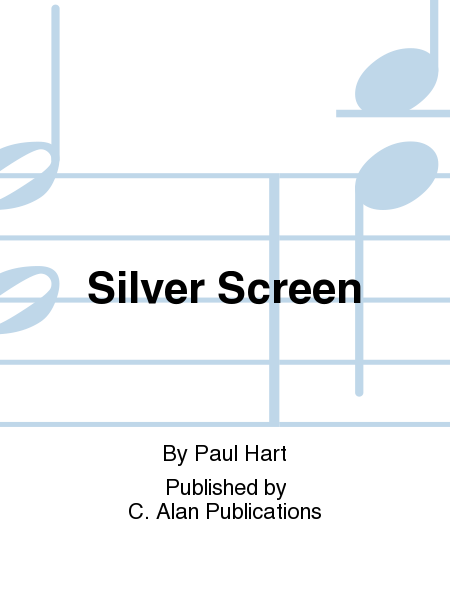Silver Screen
-
Ships in 3 to 4 weeks
Details
Description
SKU: CN.R10246
Composed by Paul Hart. Band Music. Score and parts. Duration 10:45. Published by G & M Brand Music Publishers (CN.R10246).Paul Hart's tongue-in-cheek piece is an inevitably programmatic version of a silent film score. We can hear the story unfold from the opening credits to a clown-like hero and his beautiful heroine to the villain who ties her to the train tracks. If you like Cartoon, you will love Silver Screen.
Before starting to write this piece I did a little basic research and was surprised to learn how sophisticated the art of providing music for silent films eventually became. A large theatre might well employ an orchestra of sixty or more musicians and keep a library of many thousands of orchestral scores including many classical selections as well as popular music of the day. My impressions of silent film music had always been based on the compilations of snippets which used to be aired on British TV in the 1960s as "Fillers." I suppose the music for these was composed and recorded in the sixties and would often just be a "Honky-Tonk" piano. We were treated to sections of comedies and melodrama and I don't remember ever seeing a full-length film. My piece is really a reflection of the impressions which these broadcasts made on me and is, as such, slightly tongue-in-cheek. The piece is inevitably programmatic and the story might unfold as follows. Logos and opening credits wind down to a dawn shot of an American town, which soon comes to life with bustling energy. A stumble and a clarinet gliss lead to the introduction of the hero who is, of course, a clown-like figure. A fanfare announces the arrival of the Mayor, a pompous swaggering chap, followed by his beautiful daughter, the heroine, portrayed by the alto saxophone. She meets the hero and we hear their respective tunes intertwining. This happy scene is interrupted by the arrival of the villain who struts around menacingly and his eye falls on the Mayor's daughter and our hero. He must have feelings for the girl and an anxious dialogue ensues in which we hear their three themes tossed around nervously. The hero tries to calm things down but to no avail and we are led into a chase which culminates in the hero getting knocked unconscious and the Mayor's daughter being tied to the railway tracks. (I never quite understood why this would happen in silent films, I suppose it's a case of "If I can't have her then nobody else shall.") We hear the sound of an approaching train and as the tension builds, our heroine cries out in fear and the villain gloats and rubs his hands. Happily, of course, our hero wakes up, kills the villain and rescues the girl just as the train arrives. The train disappears into the distance, the girl expresses her love for the hero, climaxing in a romantic scene in which he proposes to her. This is interrupted by the villain's body being borne away. Everyone then goes about their business...a happy ending, followed by the credits.

 Share
Share